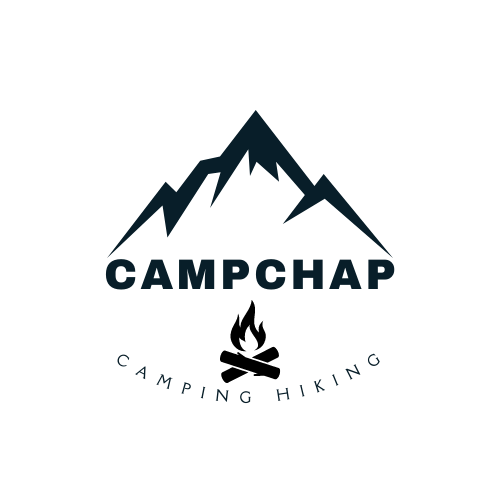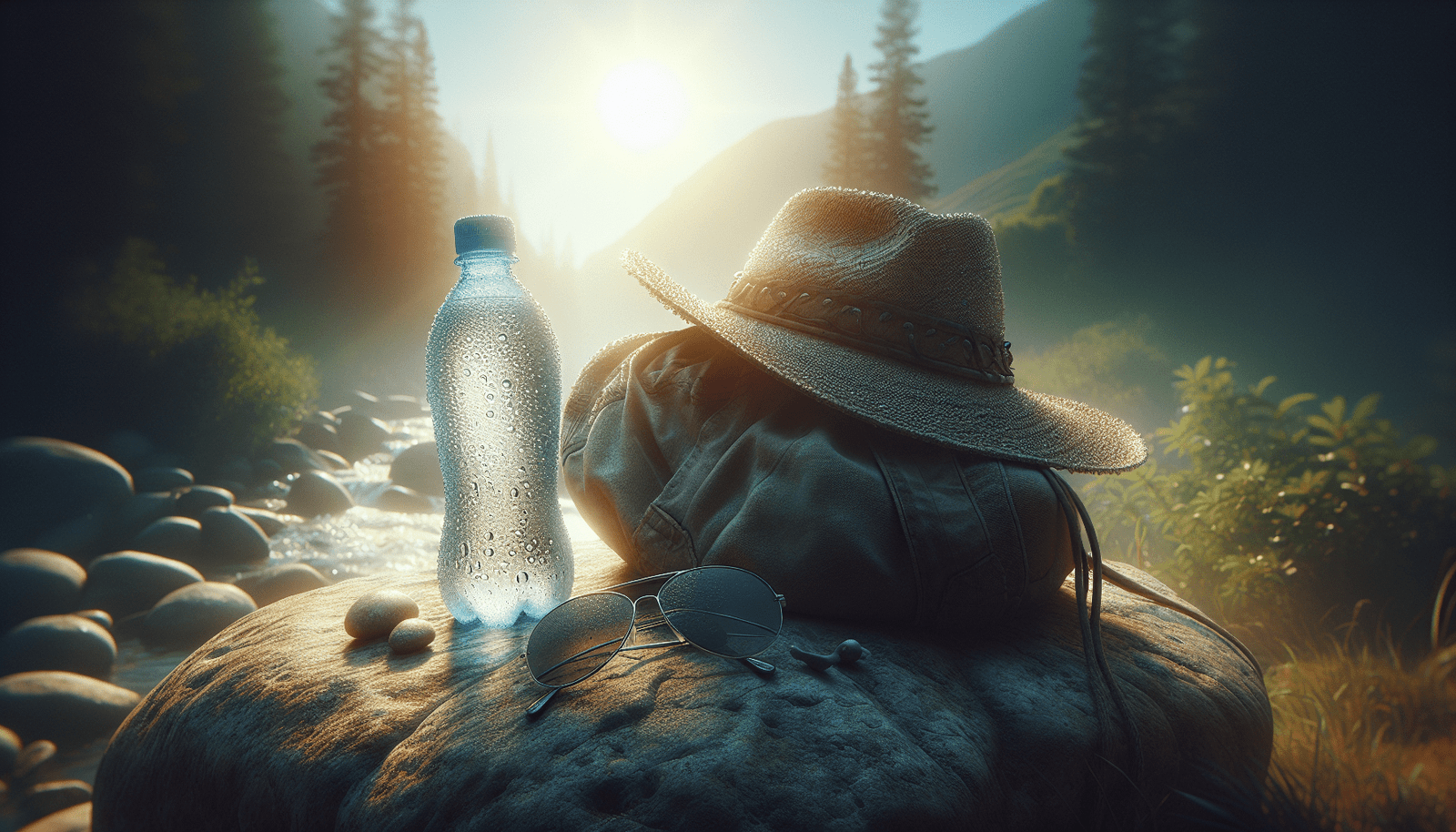Is 90 Degrees Too Hot For Camping?” explores the challenges and rewards of camping in high temperatures, helping you decide if it’s right for your next adventure. While sizzling summer days can make outdoor activities more strenuous, the article provides practical tips for staying cool, hydrated, and safe. You’ll discover how to adapt your gear, choose the right campsite, and make the most of your trip without melting under the sun. Get ready to embrace your love for nature, even when the mercury rises! Have you ever wondered if 90 degrees is too hot for camping? Whether you’re a seasoned camper or a newcomer to the world of outdoor adventures, this question is bound to have crossed your mind. As you prepare to hit the trails and enjoy the great outdoors, understanding the impact of high temperatures on your camping experience can make or break your trip.
Camping in 90-degree weather comes with its unique set of challenges. With the right preparation and understanding, you can still have an amazing time under the sun. Let’s dive into the ins and outs of camping in hot weather and explore how to stay comfortable and safe.
Understanding the Impact of Heat
How Heat Affects Your Body
When the temperature soars to 90 degrees, it has a significant impact on your body. High temperatures can lead to dehydration, heat exhaustion, and heat stroke, all of which can be serious or even life-threatening if not managed properly.
| Condition | Symptoms | Prevention |
|---|---|---|
| Dehydration | Thirst, dry mouth, dark urine, fatigue, dizziness | Drink plenty of water, avoid alcohol and caffeine, eat water-rich foods |
| Heat Exhaustion | Heavy sweating, weakness, cold, pale and clammy skin, nausea or vomiting, fainting | Stay in the shade, wear light clothing, rest frequently, replace lost fluids with salt and electrolytes |
| Heat Stroke | High body temperature, hot and dry skin, rapid pulse, confusion or unconsciousness | Seek immediate medical help, move to a cooler place, reduce body temperature with cool cloths or water |
Environmental Factors
Aside from the direct impact of heat on your body, high temperatures also affect the environment around you. Understanding these factors can help you plan better.
- Wildlife: Many animals become more active during cooler parts of the day. You may encounter fewer animals during the hottest hours.
- Water Sources: Some water sources may dry up or become less accessible, which can impact your hydration and cooling strategies.
- Insects: Heat can increase insect activity. Be prepared for bugs, especially mosquitoes and ticks.
Preparing for Hot Weather Camping
Choosing the Right Campsite
When camping in 90-degree weather, selecting the right campsite can make a huge difference.
Shade
Look for a campsite with plenty of natural shade. Trees and large rocks can provide relief from the scorching sun. Pitch your tent in a shaded area to keep it cooler during the day.
Water Access
Being close to a water source, such as a lake or river, can help you cool down quickly. However, be mindful of potential risks such as strong currents or contaminated water.
Elevation
Camping at higher elevations generally means cooler temperatures. If possible, find a campsite at a higher altitude to escape some of the heat.
Essential Gear for Hot Weather
Having the right gear is crucial for camping in high temperatures. Here’s a list of must-have items to keep you comfortable.
| Gear | Description |
|---|---|
| Lightweight Tent | Choose a well-ventilated tent made of breathable material. |
| Portable Fan | Battery-operated or solar-powered fans can provide much-needed airflow. |
| Sleeping Bag Liner | Opt for a lightweight and breathable liner instead of a heavy sleeping bag. |
| Cooling Towels | These towels can be soaked in water and draped around your neck or head for instant relief. |
| Hydration Pack or Bottle | A hydration system that allows you to drink hands-free can encourage you to sip water frequently. |
| Sunshade or Tarp | Set this up in your campsite to create additional shaded areas. |
| Bug Spray and Sunscreen | Protect yourself from the sun’s harmful rays and pesky insects. |
Clothing Choices
What you wear can either help you stay cool or make you feel miserably hot. Choose your clothing wisely.
- Light Colors: Dark colors absorb more heat, so opt for lighter shades that reflect the sun’s rays.
- Breathable Fabrics: Materials like cotton, linen, and moisture-wicking synthetic fabrics help keep you cool by allowing sweat to evaporate.
- Hats and Sunglasses: A wide-brimmed hat and UV-protection sunglasses can shield you from direct sunlight.
Hydration and Nutrition
Staying Hydrated
One of the most critical aspects of camping in hot weather is staying properly hydrated.
How Much Water to Drink
As a general rule, you should drink at least half a gallon of water per day, but in hot weather, you might need significantly more. Always listen to your body and drink whenever you feel thirsty.
Electrolyte Replacement
Sweating causes you to lose more than just water. Replenishing electrolytes is equally important. You can do this by:
- Drinking sports drinks
- Eating salt-rich snacks
- Using electrolyte tablets or powders
Smart Eating
Eating the right foods can also help you cope with the heat.
Avoid Heavy Meals
Heavy, greasy meals can make you feel lethargic. Stick to light and easily digestible foods.
Eat Water-Rich Foods
Fruits and vegetables have high water content and can contribute to your overall hydration. Consider bringing:
- Watermelon
- Cucumber
- Oranges
- Grapes
Safe Activities in High Heat
Timing Your Activities
When the temperature is 90 degrees or more, the timing of your activities can play a crucial role.
Morning and Evening
Plan strenuous activities like hiking, biking, or exploring during the early morning or late evening when temperatures are cooler.
Midday Rest
Use the hottest part of the day to rest, hydrate, and eat. Set up a hammock in the shade and read a book or take a nap.
Water-Based Activities
Swimming, kayaking, or even wading in a brook can help you cool down. Always follow safety guidelines when engaging in water activities.
Potential Risks and How to Avoid Them
Heat-Related Illnesses
Recognizing Symptoms
Being able to recognize the symptoms of heat-related illnesses can prevent a minor issue from becoming a major problem.
| Illness | Symptoms | Immediate Actions |
|---|---|---|
| Heat Cramps | Muscle spasms, usually in the legs or abdomen | Rehydrate with water and electrolytes, gently stretch and massage the affected muscles |
| Heat Exhaustion | Heavy sweating, weakness, dizziness, nausea, fast and weak pulse, cool and clammy skin | Move to a cooler place, lay down, elevate legs, remove excess clothing, drink water, apply cool cloths |
| Heat Stroke | High body temperature, altered mental state, rapid breathing, hot and dry skin | Call for emergency help, move to a cool place, apply ice packs or cool water, do not give fluids if unconscious |
Insect Bites and Sunburn
Hot weather often means an increase in insect activity and UV exposure.
Insect Protection
- Use insect repellent with DEET or other proven ingredients.
- Wear long sleeves and pants, especially during dawn and dusk.
- Consider using a mosquito net.
Sun Protection
- Apply sunscreen with at least SPF 30.
- Reapply sunscreen every two hours, or more frequently if swimming or sweating.
- Wear protective clothing and a hat.
Practical Tips and Tricks
Cooling Techniques
There are several ways to stay cool without the luxury of air conditioning.
- Evaporative Cooling: Dampen a cloth and place it on pulse points like your wrists and neck.
- Cold Packs: Use ice packs or make your own with frozen water bottles.
- Camp Setup: Orient your tent to face the breeze and keep windows open for ventilation.
- Bedtime Routine: Rinse off with cold water before bed, and use a lightweight sheet instead of a sleeping bag.
Efficiency with Resources
Water and energy are precious when camping in hot conditions.
- Conserve Water: Use biodegradable wipes for quick cleanups. Collect any rainwater for non-drinking uses.
- Solar Power: Solar chargers can keep your gadgets powered without the need for batteries or outlets.
Choosing the Right Time for Camping
Seasonal Considerations
While summer is the most popular time for camping, it’s not the only option.
Spring and Fall
These shoulder seasons often offer milder temperatures and fewer crowds. They can be an excellent alternative if you find 90 degrees too oppressive.
Night Camping
Exploring nighttime camping can be a serene and cooler alternative. Temperatures drop significantly at night, making it more comfortable for activities and sleep.
Monitor Weather Forecasts
Before you set out, always check the weather forecasts for your camping area. Unexpected weather changes can be dangerous in extreme heat.
Real-life Experiences and Stories
Testimonials
Hearing from other campers who’ve successfully navigated hot weather can provide valuable insights and tips.
“They key for me was starting early and taking long breaks during the hottest part of the day,” says Chris, an avid summer camper. “I also can’t stress enough the importance of hydration — having a hydration pack made it easy to sip water frequently.”
“Setting up a tarp over my tent made a huge difference,” shares Emily. “It created a shaded area where I could relax without roasting in the sun.”
Lessons Learned
Real stories can also offer lessons on what not to do.
“I thought I could handle the heat because I’m pretty fit, but I ended up with heat exhaustion on day two,” recalls Jason. “Never underestimate the power of the sun, and always listen to your body.”
Conclusion
So, is 90 degrees too hot for camping? It depends. With the right preparation, mindset, and equipment, you can absolutely enjoy a camping trip even in high temperatures. Understanding the impact of heat on your body, choosing the right campsite, staying hydrated, and timing your activities wisely are key components to a successful hot-weather camping experience.
Remember, safety always comes first. If you ever feel overwhelmed by the heat, it’s okay to change plans or seek a more comfortable environment. With these tips, you’re well on your way to making the most out of your hot-weather camping adventure. Happy camping!

